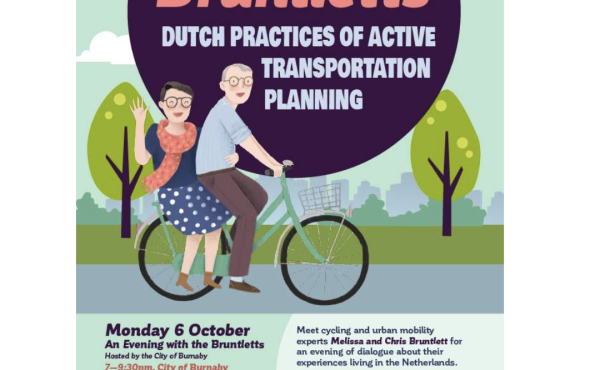

Author: Donald L. Elliot (Island Press, 2008)
Modern cities are regulated entities. Behind even the most chaotic urban scene there is an extremely ordered structure of words, pictures, and tables that set the boundaries of our three-dimensional world and the distribution of uses within it. This is zoning…and it touches the lives of all people who inhabit our urban centres.
Those who are familiar with my writings know that I spend a lot of time and energy critiquing the regulations that have created many of the awkward (and sometimes backward) aspects of our city. Academically, I place a lot of emphasis on teaching design students – much to their chagrin – the importance of understanding the real effects regulations have on the built environment.
People often ask why I bother going to such lengths to discuss such a mundane and boring topic and to this I usually respond that it is precisely because it is “mundane and boring”. Such topics consequently go unconsidered and, given the importance zoning plays in shaping our environment, this is a dangerous practice because how can something be improved if it is not publicly debated?
Luckily, there are kind souls like Donald L. Elliot around who take the time to write books like A Better Way to Zone: Ten Principles to Create More Livable Cities. Elliot is an attorney from the Macgillivray Law and city planner, and this book critically analyzes the process of zoning and shares lessons he has learned through his extensive international experience in land-use planning and environmental law.
Very accessible to any reader, the book offers a comprehensive analysis and critique of zoning. It starts with a wonderful, concise description of “Euclidean” zoning’s humble beginnings – how and why it started – and its transformation in response to the new pressures and dilemmas created by the increasing complexity of our cities, including the introduction of Form-based zoning, Planned Unit Developments (PUDs), and Performance zoning. The ultimate result of which is what he calls “Euclidean hybrid zoning”.
After recounting the 92-year history of zoning, the next three chapters of the book critique different aspects of the current Euclidean hybrid zoning system – failed assumptions of zoning, factors that drive land-use and issues relating to good governance, respectively. To Elliot, these are factors that must be addressed when considering how to make zoning better. And although Elliot does not fully address solutions to these issues at this time, each topic is followed by “hints” of what it might mean for changing zoning practices.
As a natural extension of the historical description, Elliot begins his critique by explaining the failed assumptions that form the foundation of the Euclidean hybrid zoning – such as the ideas that “uses must be separate” or “nonconformities will go away” – bringing to light the beliefs about cities and land use that lie hidden within typical regulations.
This is followed by an explanation of what Elliot believes to be the main forces driving land use – the real estate market, taxation, transportation systems, affordability, and NIMBYism. These are issues that the pure model of zoning wasn’t originally intended to address but had to adjust in response to them as their power of influence grew. Given currently how much these factors influence city form, Elliot argues that instead of constantly playing “catch up” with these forces, we must rethink zoning in anticipation of how they will affect zoning decisions.
Lastly, Elliot describes “good governance” and critiques how zoning has failed to be effective, responsive, fair, and efficient. Furthermore, he succinctly explains how zoning has grown to be less understandable to the average person as well as the importance of striking the balance between regulatory flexibility and predictability – “predictable flexibility.”
Upon completion of the critiques, Elliot delves into reviewing the basic laws relating to zoning. Although he focuses on U.S. federal law and constitutional protections, many of the topics introduced are broad enough to apply locally despite the fact that the details are largely irrelevant in the Canadian context.
Following the latter, and based on the strong critiques discussed, is a quick summary of the lessons learned to-date. This flows into the introduction of the ten principles lightly hinted at throughout the book:
- more flexible uses;
- the mixed-use middle;
- attainable housing;
- mature area standards;
- living with nonconformities;
- dynamic development standards;
- negotiated large developments;
- depoliticized final approvals;
- better webbing; and
- scheduled maintenance.
Each of these topics is extremely well described and intelligently connected directly to all the earlier content of the book. For quick reference, it even includes a summary list of the issues that each principle addresses and how it fixes the flaws of current zoning….a handy resource. The book concludes with actions that can be taken to start implementing the transformations required to make zoning better.
As a person who constantly deals with policies and regulations, I must admit that I was not overly enthusiastic about reading a book on zoning. But I was very pleasantly surprised with A Better Way to Zone. Its accessible, easy-to-understand language made it a pleasure to read while its clear structure made Elliot’s arguments easy to follow. Furthermore, all the topics are succinctly explained (the book itself is only 200-pages long!) without delving into the technical details that make for arduous reading.
Most importantly, however, Elliot’s recommendations are excellent and well-founded. Having lost many hairs dealing with zoning ordinances and those who apply them, I often caught myself unknowingly nodding my head in approval at what I was reading. Undoubtedly, this is one of the most rewarding reads I’ve had this year.
Despite being 4 years old, this book should find its way onto the desks of all city councillors, planners, students and those interested in understanding and improving the processes by which we shape our cities. After all, the future of our cities – and ourselves – revolves around ensuring that the systems we put in place shape our world work well.
***
If you would like more information, feel free to visit the book’s great and informative website.
**
Erick Villagomez is one of the founding editors at Spacing Vancouver. He is also an educator, independent researcher and designer with personal and professional interests in the urban landscapes. His private practice – Metis Design|Build – is an innovative practice dedicated to a collaborative and ecologically responsible approach to the design and construction of places. You can also see some of his drawing and digital painting adventures at Visual Thoughts.


